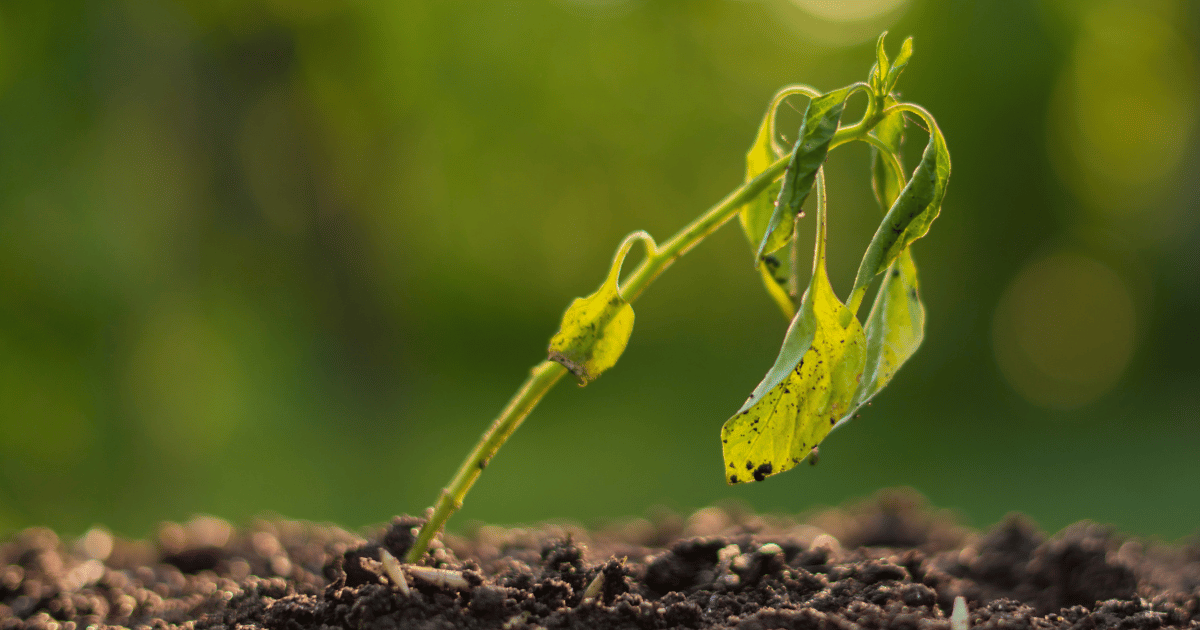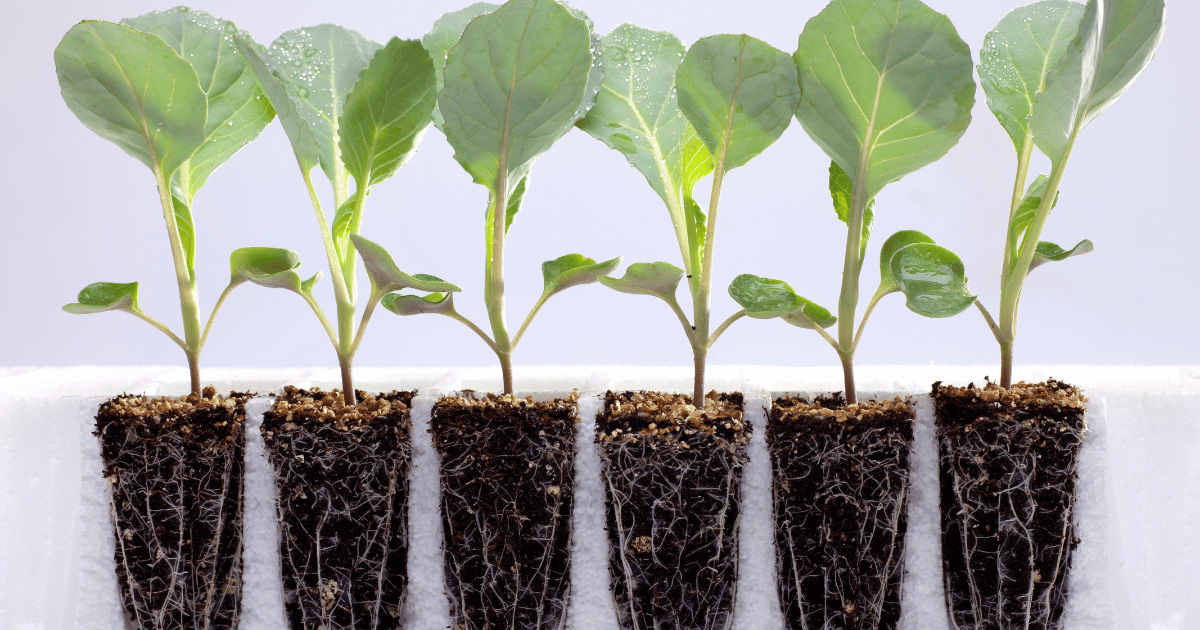Mastering the Art of Hardening Off Seedlings
By Ryan Dorn, SouthernSeeds.com

As spring approaches and seedlings start to sprout, gardeners everywhere prepare for one of the most crucial steps in the gardening process: hardening off seedlings. This essential skill, often overlooked by novices, is vital for transitioning plants from their cozy indoor environments to the great outdoors. Hardening off is not just a routine; it's a rite of passage for every seedling, ensuring they withstand the elements and thrive in their new environment. Understanding and mastering this technique can significantly impact the success of your garden, making it an indispensable part of a gardener's knowledge base.
The importance of hardening off lies in its ability to gradually acclimate seedlings to the harsher conditions outside, including direct sunlight, wind, and temperature fluctuations. Without this gradual introduction, seedlings can suffer from shock, stunting their growth or even resulting in their demise. It's a delicate dance between providing protection and encouraging strength, requiring patience and attention from the gardener. As we dive deeper into the hows and whys of hardening off, remember that this process is as much about nurturing resilience in your plants as it is about fostering a deeper connection with your garden.

Why Hardening Off is Essential
Hardening off seedlings before transplanting them outdoors is a critical step that goes beyond merely acclimating them to new environmental conditions. This process plays a pivotal role in building the structural and physiological resilience of young plants. Inside the controlled environment of a home or greenhouse, seedlings are protected from the variables that they will face in their permanent outdoor home. The gentle breezes and filtered light of an indoor setting do little to prepare them for real-world challenges.
When seedlings are moved outdoors without a proper transition, they can suffer from sunscald due to the intensity of direct sunlight, which they've never experienced. Wind can also pose a significant threat, as indoor plants haven't developed the strong stems necessary to withstand gusts. Temperature variations, which are often more extreme outdoors, can shock plants that are not gradually exposed to cooler nights and warmer days. Hardening off, therefore, is not just about survival; it's about giving plants the best start in their life, ensuring they have the vigor to overcome pests, diseases, and fluctuating weather conditions. This foundational step is what transforms a tender seedling into a robust plant, capable of producing bountiful flowers, fruits, and vegetables.
When to Harden Off Your Seedlings
Timing is everything when it comes to hardening off your seedlings, and knowing when to start this process is crucial for their transition to outdoor life. Ideally, hardening off should begin about 7 to 10 days before you plan to transplant them into the garden permanently. However, the current and anticipated outdoor temperatures relative to the conditions your seedlings have been growing in play a pivotal role in determining the exact timing.
Even if the outdoor temperatures seem similar to your indoor conditions, it's essential to harden off your plants. This is because temperature is just one factor; the intensity of sunlight, wind exposure, and the variability of outdoor conditions mean that even a slight change in temperature can impact plants that haven't been properly acclimated. For seedlings grown in a consistently warm, protected indoor environment, moving them outdoors when temperatures are significantly colder or even warmer can cause stress. This stress can manifest as slowed growth, reduced vigor, or even plant death if the transition isn't managed carefully. Remember, the goal of hardening off is to strengthen your plants, making this step an indispensable part of your gardening routine, one that sets the foundation for a healthy, productive garden.

Knowing When to Transplant Seedlings Outdoors
Transplanting seedlings outdoors is a pivotal moment in their journey, and timing this transition correctly is crucial for their development and survival. A key indicator that seedlings are ready for the outdoors is the emergence of their first true leaves. Unlike the initial leaves, or cotyledons, that emerge following germination, true leaves resemble those of the mature plant and signify that the seedling has begun photosynthesis - the process of converting energy from the sun into the food it needs to grow. This transition from relying on the seed's stored energy to drawing sustenance from sunlight marks a critical phase in the seedling's development, making it a prime time for transplantation.
In addition to the appearance of true leaves, the height and overall health of the seedling are essential factors to consider before moving them outdoors. Typically, seedlings should be about 3-4 inches tall and display robust, vibrant foliage. A sturdy stem and a healthy root system that's not yet circling the pot are also signs that the seedling is ready to face the outside world. Transplanting a seedling too early can jeopardize its ability to withstand the elements and adapt to its new environment, while waiting too long can lead to root-bound plants that struggle to acclimate and grow.

It's also important to ensure that outdoor conditions are conducive to the seedlings' growth. This means waiting until any danger of frost has passed and soil temperatures have warmed sufficiently. Paying attention to these details and ensuring your seedlings are at the appropriate stage of development and health before transplanting will set them up for success, giving them the best chance to thrive in their new outdoor home.
How to Harden Off Seedlings
Hardening off seedlings is a gradual process that prepares them for the challenges of outdoor life. This step-by-step approach ensures your young plants adjust to the sunlight, temperature fluctuations, and wind they will encounter in the garden. Here’s how to do it effectively:
-
Start Gradually: Begin by placing your seedlings outdoors in a shaded, sheltered spot for just 1-2 hours on the first day. An area that receives indirect sunlight is ideal to prevent sunscald and reduce water loss.
-
Increase Exposure: Over the course of a week to ten days, gradually increase the time your seedlings spend outside by 1-2 hours each day. This slow increase helps them acclimate to direct sunlight, outdoor temperatures, and the elements without causing stress or shock.

-
Introduce Sunlight: After a few days, start moving your seedlings into direct sunlight for short periods. Early morning is usually the best time for this, as the sun is less intense. Watch your plants closely for any signs of distress, such as wilting or bleaching, and if observed, move them back to the shade.
-
Monitor Weather Conditions: Always keep an eye on the weather forecast during the hardening off period. If temperatures drop significantly or if severe weather is expected, bring your seedlings indoors to protect them. Avoid exposing them to strong winds or heavy rain, which can damage delicate young plants.
-
Leave Out Overnight: Towards the end of the hardening off process, when your seedlings have been exposed to full sun for several days and are showing signs of robust health, you can start leaving them out overnight, provided there’s no risk of frost and temperatures are consistently warm.
-
Transplanting Time: Once your seedlings have been successfully hardened off and are displaying strong growth, they’re ready to be transplanted into the garden. Choose a cloudy day or late afternoon for transplanting to reduce transplant shock and help them adjust to their new environment more easily.
Remember, patience is key during the hardening off process. Rushing this stage can undo weeks of careful nurturing. Watching for signs like leaf burn or wilting will tell you if you need to slow down and give your plants more time to adjust. This careful attention ensures that by the time your seedlings make their final move to the garden, they’re as strong and resilient as possible, ready to grow and thrive.
Plants That Benefit Most from Hardening Off
While hardening off is a beneficial practice for nearly all seedlings before transplanting, certain plants particularly thrive after undergoing this crucial acclimatization process. Emphasizing the importance of hardening off cannot be overstated, especially for these tender varieties that are more susceptible to transplant shock and environmental stress. Let’s delve into which plants stand to gain the most from this preparatory step.
1. Tomatoes and Peppers: These warm-season favorites are notorious for their sensitivity to temperature changes. Hardening off helps them adjust to the outdoor climate, significantly reducing the risk of stunted growth or blossom drop.
2. Cucumbers, Squashes, and Melons: Members of the cucurbit family grow rapidly and can suffer from the shock of moving from a controlled environment to the garden. Gradually introducing them to outdoor conditions ensures they continue to thrive and produce abundantly.
3. Leafy Greens: While hardy, young lettuce, kale, and spinach plants can wilt or bolt if suddenly exposed to harsh sunlight. A gentle transition helps preserve their tender leaves and extends their harvesting period.
4. Flowers: Many annual and perennial flowers, from marigolds to petunias, benefit from hardening off. This process strengthens their stems and foliage, making them more resilient against wind and intense sun.
5. Herbs: Culinary and medicinal herbs, including basil, cilantro, and thyme, are grown for their delicate leaves and oils. Hardening off protects these qualities by ensuring the plants are not shocked by their new outdoor homes.
6. Hard to Germinate Seeds: For the gardening enthusiasts who embrace the challenge of growing more demanding plants, such as Witch Hazel or Elderberry, hardening off becomes not just beneficial, but essential. These "project seeds" often require extensive preparation to germinate, including months of cold stratification or other specific treatments. After investing so much time and effort into coaxing these seeds to life, the last thing any gardener would want is to lose their precious seedlings to the shock of sudden outdoor exposure. Gradual hardening off ensures that these labor-intensive plants are well-adjusted to their new environment, safeguarding your efforts and ensuring that these unique additions to your garden not only survive, but thrive. This meticulous approach underscores the importance of patience and care in gardening, especially when dealing with varieties that demand a bit more attention and preparation.
Wrapping Things Up!
As we wrap up our guide on hardening off seedlings, it's important to remember that this step, while requiring patience and care, is pivotal in setting the stage for a successful and vibrant garden. The transition from the protective indoor environment to the great outdoors is a critical period in the life of your seedlings, preparing them to flourish and bring your garden to life.
But remember, you're not alone in this journey. Here at Southern Seeds, we see ourselves as much more than just a seed company; we are your partners in the gardening journey. From selecting the perfect seeds to guiding you through each step of their growth, including crucial processes like hardening off, we're here to support you.
If you ever have questions or need advice on any aspect of gardening, please don't hesitate to reach out. Our team is passionate about plants and committed to providing the guidance you need to make your garden thrive. We believe in building a community of gardeners who support one another, sharing successes and learning from challenges.
So, as you move forward with hardening off your seedlings and transitioning them to their outdoor home, remember that Southern Seeds is with you every step of the way. Let's grow together, nurturing not just plants, but a vibrant, thriving gardening community. Happy gardening!

